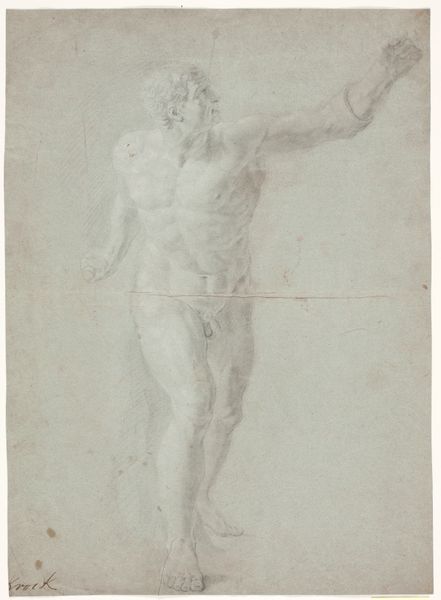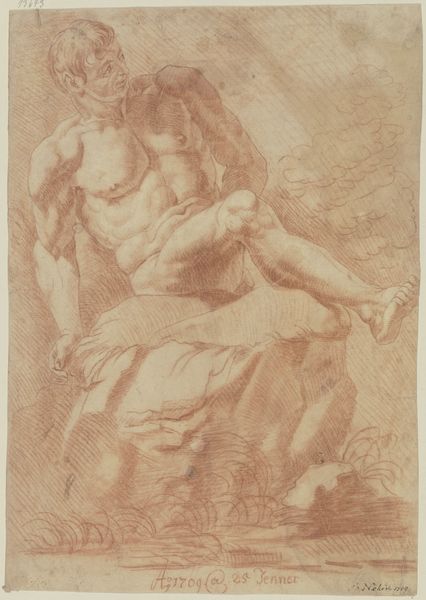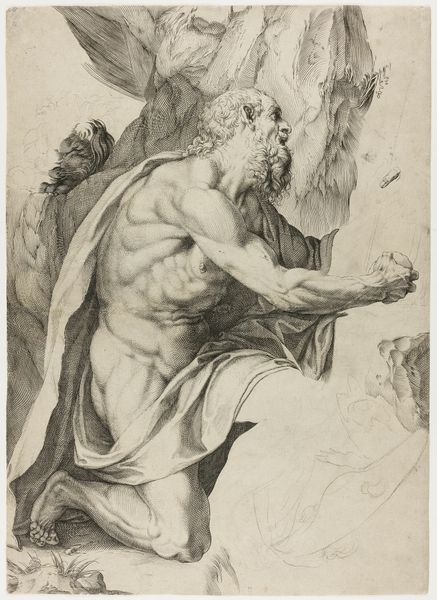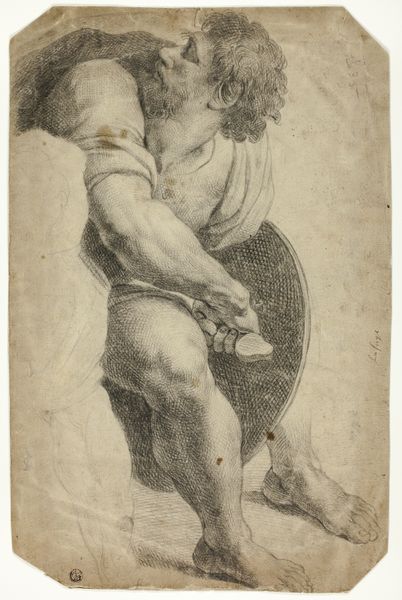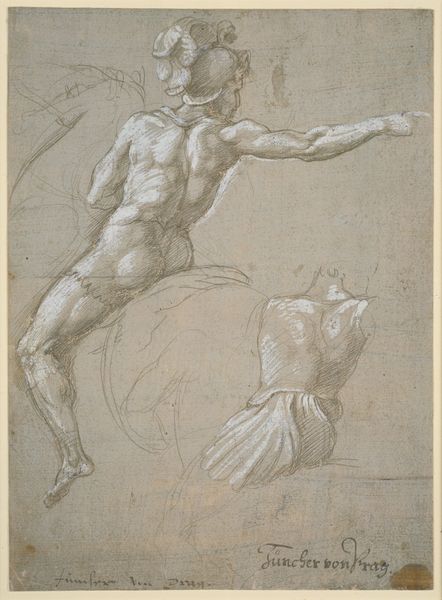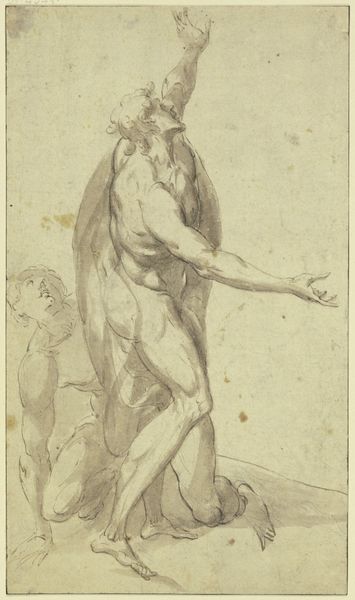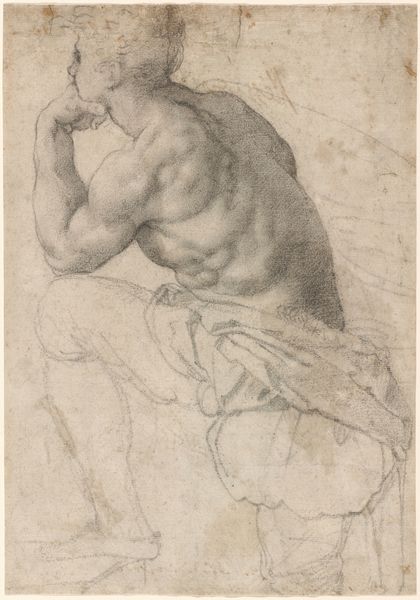
drawing, pencil
#
drawing
#
baroque
#
figuration
#
pencil drawing
#
pencil
#
nude
Dimensions: sheet: 32 x 24.5 cm (12 5/8 x 9 5/8 in.)
Copyright: National Gallery of Art: CC0 1.0
Editor: So, this is Ciro Ferri’s "Faun Reclining," a pencil drawing from between 1660 and 1680. It strikes me as both classical and somehow unsettling – maybe it’s the faun's direct gaze. What stands out to you? Curator: It's a figure steeped in mythology, isn’t it? But who gets to define mythology and who gets erased? Notice the robust form of the faun – how does this portrayal intersect with traditional representations of masculine identity during the Baroque period? Was this merely artistic exercise, or did it challenge societal norms through classical allusion? Editor: So, you’re thinking about how the image might play with ideas of masculinity at the time? Curator: Precisely! Consider also, the context: Baroque Rome, heavily influenced by the Church. How does the depiction of a nude, pagan figure disrupt, or perhaps subtly negotiate with, that environment? The male gaze is a construction – but in whose favor? Editor: It’s fascinating to consider the politics within a drawing that seems so… well, classical! Curator: It's a crucial reminder that art doesn’t exist in a vacuum. It's a reflection of and intervention within specific socio-political landscapes. How do those older assumptions inform current understandings? Editor: That really shifts how I see the drawing. It makes me think about what power dynamics are always at play in visual culture, even centuries later. Curator: Indeed. Looking at "Faun Reclining" through a contemporary lens pushes us to confront those lasting issues and question the narratives we inherit.
Comments
No comments
Be the first to comment and join the conversation on the ultimate creative platform.
